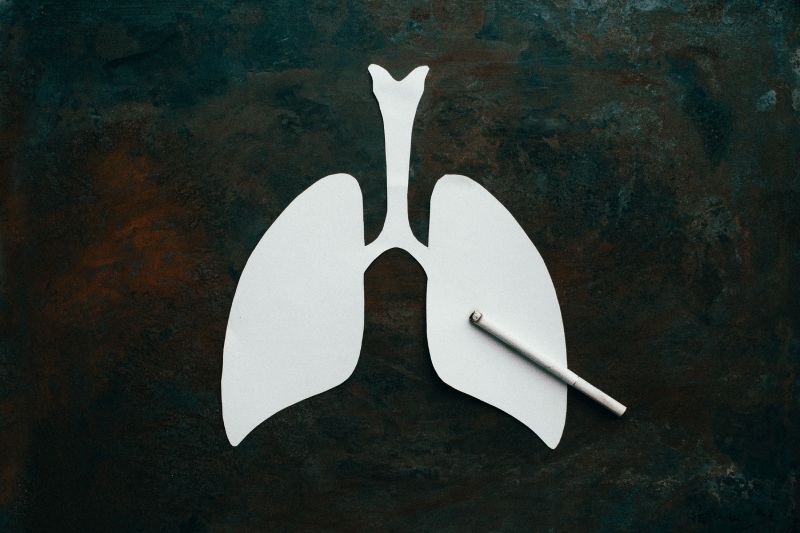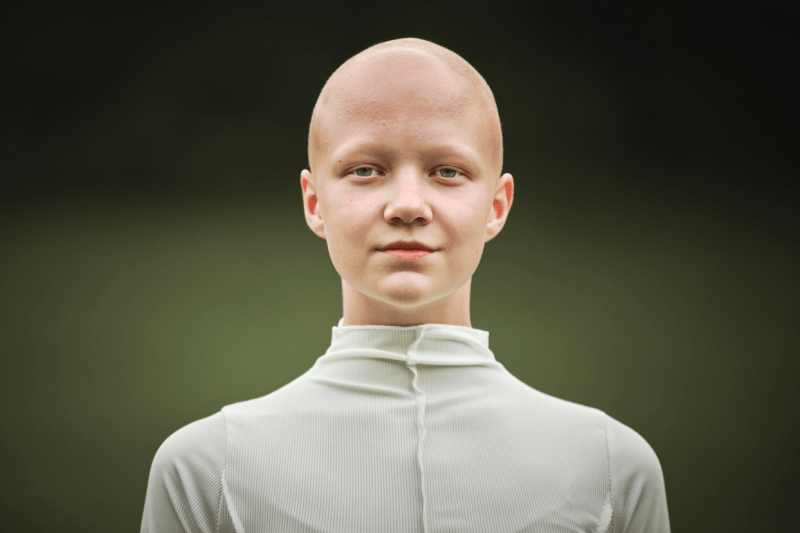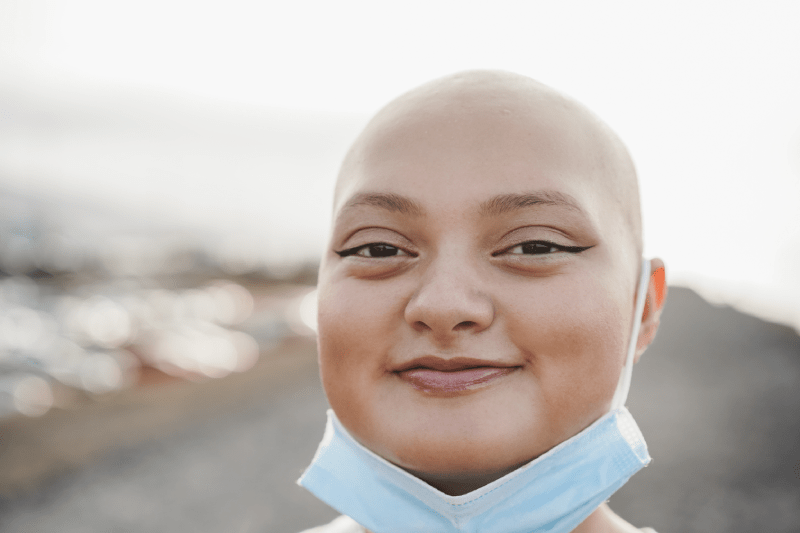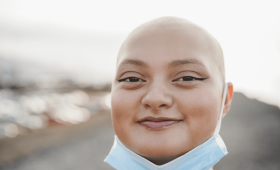The first treatment a patient receives after a lung cancer diagnosis is a completely personalized process that depends on the type and extent of the disease (its stage). The initial treatment decision can vary among surgery, radiotherapy, chemotherapy, smart drugs, or immunotherapy, and this decision is made by a multidisciplinary council. Today, advanced oncology centers in Turkey aim to maximize treatment success by implementing this initial treatment rapidly and according to international standards.
What Is The Most Critical Step That Determines The First Treatment?
The most critical step that determines the first treatment is the accurate and definitive staging of the cancer and the determination of its molecular type. Lung cancer treatment differs greatly between surgery applied in Stage 1 and immunotherapy applied in Stage 4. Therefore, the tumor’s size, its spread to lymph nodes, and metastasis to distant organs must be clarified using diagnostic tools like PET-CT, MRI, and biopsy. Furthermore, molecular tests must be performed absolutely before the treatment decision to determine the suitability of Non-Small Cell Lung Cancer (NSCLC) patients for smart drugs or immunotherapy.
When Should Treatment Start After A Lung Cancer Diagnosis?
It is vital that treatment start as soon as possible and without delay after a lung cancer diagnosis. Since cancer is a rapidly progressing disease, the treatment protocol should be initiated immediately after staging and molecular tests are completed. The fast appointment scheduling and short waiting times offered by oncology centers in Turkey are a significant advantage, especially for international patients. The urgency of the treatment is a critical factor for limiting the spread of the disease and increasing the chance of successful outcomes.
What Is Usually The First Treatment Option For Stage 1 Lung Cancer?
The first treatment option for Stage 1 Lung Cancer is usually surgical operation, and it offers the highest chance of complete cure for patients at this stage. Surgery involves the removal of the lung lobe containing the tumor using minimally invasive techniques (VATS or Robotic Surgery). These methods offer less pain, shorter hospital stays, and faster recovery compared to traditional open surgery. If the patient’s general health condition is not suitable for surgery, SBRT (Stereotactic Body Radiotherapy) is evaluated as the initial treatment, providing local control equivalent to surgery.
Which Patients Are Administered Smart Drugs As The First Treatment?
Smart drugs (targeted therapies) are administered as the first treatment only to Non-Small Cell Lung Cancer (NSCLC) patients whose tumor tissue has specific genetic mutations (such as EGFR, ALK). These drugs directly block the pathways that enable the growth of cancer cells. In patients with positive molecular test results, smart drugs are generally preferred over chemotherapy, as they offer higher and longer response rates with fewer side effects. This is the most concrete example of personalized treatment.
What Is The Initial Treatment For Small Cell Lung Cancer (SCLC)?
Since Small Cell Lung Cancer (SCLC) is an extremely aggressive cancer type, the initial treatment is generally based on systemic therapy. If the disease is caught in the limited stage, the first treatment is concurrent (simultaneous) chemotherapy and radiotherapy. This combined approach systematically kills rapidly spreading cells while providing local control with radiotherapy. If the disease is in the extensive stage, the first treatment may be a combination of chemotherapy and immunotherapy. Surgery is rarely considered, only in very early and special circumstances.
In Which Cases Is Chemotherapy Before Surgery (Neoadjuvant Therapy) The First Step?
Chemotherapy before surgery (Neoadjuvant therapy) is usually applied as the first step in locally advanced NSCLC patients, such as Stage 2 and Stage 3A, where the cancer has spread to nearby lymph nodes. The main goal of this treatment is to shrink the tumor and eliminate microscopic cancer cells that may have potentially spread throughout the body. Tumor shrinkage makes the surgical operation easier and more successful, which reduces the long-term risk of recurrence and increases the chance of cure.
When Is Immunotherapy Applied Alone As The First Treatment In Metastatic Cancer?
Immunotherapy is applied alone as the first treatment in metastatic (Stage 4) NSCLC patients where high PD-L1 expression is detected in tumor cells. High PD-L1 levels indicate that the tumor suppresses the immune system; immunotherapy removes this suppression, allowing immune cells to destroy the cancer. In this situation, immunotherapy has the potential to provide more durable and permanent responses with fewer side effects than chemotherapy. This decision is based on molecular test results.
How Does The First Treatment Selection Differ In Elderly Patients?
The first treatment selection in elderly patients differs based on the patient’s general health status (performance status) and coexisting diseases rather than their chronological age. Elderly patients in good general health can receive standard treatments (surgery, chemotherapy). However, in patients with poor performance, less intensive dose treatments, only immunotherapy, or low-dose smart drugs are preferred as the first option to minimize the risk of side effects. The priority is always to preserve the quality of life.
Why Is Biopsy Absolutely Necessary Before Treatment In Lung Cancer Diagnosis?
Biopsy is absolutely necessary before treatment in lung cancer diagnosis because it determines not only the presence of cancer but also the subtype of cancer (NSCLC/SCLC) and genetic mutations. Without this information, personalized treatments like smart drugs or immunotherapy cannot be initiated. The biopsy result is the key information that definitively indicates whether the patient is suitable for surgery or should start chemotherapy or targeted therapy.

Is The First Treatment Usually A Combination In Stage 3 Lung Cancer?
Yes, the first treatment in Stage 3 (locally advanced) Lung Cancer is usually a combination, and the standard approach is concurrent (simultaneous) chemotherapy and radiotherapy. This intensive treatment aims to locally control the tumor and eliminate microscopic cells that may have spread. In recent years, immunotherapy consolidation started immediately after this combined treatment has significantly reduced the risk of recurrence, increasing long-term survival rates in Stage 3 patients.
When Is Radiotherapy Applied Alone As The First Treatment In Lung Cancer?
Radiotherapy alone is applied as the first treatment for early-stage (Stage 1) NSCLC patients who are not suitable for surgery (e.g., due to advanced COPD or heart disease). In this case, a high-precision method called SBRT (Stereotactic Body Radiotherapy) is used. SBRT aims to destroy the tumor by providing local control similar to surgery. Radiotherapy can also be the first palliative step to alleviate symptoms in advanced-stage patients, such as painful bone metastases.
When Is The Combination Of Chemotherapy And Immunotherapy Preferred In The First Treatment?
The combination of chemotherapy and immunotherapy is usually preferred as the first treatment in metastatic (Stage 4) NSCLC patients who have low PD-L1 expression or no genetic mutation suitable for smart drugs. This combination allows the antigens released when chemotherapy kills tumor cells to activate the immune system more strongly through immunotherapy. This synergistic effect can provide higher and more durable response rates than standalone treatments.
What Is The Priority In The Treatment Decision For Metastatic Patients (Stage 4)?
The priority in the treatment decision for metastatic patients (Stage 4) is to rapidly determine the correct systemic treatment (Smart Drug or Immunotherapy) suitable for the molecular characteristic of the disease and to preserve the patient’s quality of life. The goal in Stage 4 cancer is generally long-term disease control rather than complete cure. Therefore, the first treatment should be selected based on genetic analysis, being the least toxic and having the highest response potential.
How Does Continued Smoking Affect The Success Of The First Treatment?
Continuing to smoke seriously negatively affects the success of the initiated first treatment (surgery, radiotherapy, chemotherapy, or immunotherapy). Smoking reduces the effectiveness of radiotherapy by lowering oxygen levels in the lung, increases the side effects of chemotherapy and immunotherapy, and slows down wound healing. Therefore, definitely quitting smoking at the time of diagnosis is the most important step that directly and positively affects the success of the first treatment and long-term survival.
What Is The Importance Of The Multidisciplinary Council In Determining The First Treatment Plan?
The importance of the Multidisciplinary Council in determining the first treatment plan is critical. This council brings together different specialties such as a medical oncologist, radiation oncologist, thoracic surgeon, pathologist, and radiologist. The council makes a joint evaluation of the tumor’s stage, genetic structure, and the patient’s general condition, determining the most optimal combined treatment plan (e.g., surgery + neoadjuvant therapy + immunotherapy) in accordance with current scientific guidelines. This collaboration minimizes the likelihood of incorrect treatment.
What Is The Recovery Process Like For NSCLC Patients Whose First Treatment Option Is Surgery?
The recovery process for NSCLC patients whose first treatment option is surgery varies depending on the applied method. Patients who undergo minimally invasive techniques (VATS/Robotic Surgery) generally stay in the hospital for 3-7 days and can return to light daily activities within 2-4 weeks. Full recovery and return to heavy physical activities usually take 6-8 weeks. Breathing exercises and regular walking play a major role in speeding up the recovery process and regaining lung function.
In Which Cases Is Intensive Chemotherapy Mandatory As The First Treatment?
Intensive chemotherapy is mandatory as the first treatment, especially in aggressive types of cancer that spread rapidly, such as Small Cell Lung Cancer (SCLC), or in large, locally advanced (Stage 3) NSCLC tumors to shrink them before surgery. Due to the systemic nature of SCLC, a quick start to chemotherapy is essential to control microscopic spread. Because this intensive treatment can suppress the patient’s bone marrow, it must be administered under special protective conditions and with supportive treatments in the hospital.
How Is The Initial Treatment Started In The Presence Of Brain Metastasis?
The approach to initial treatment in the presence of brain metastasis differs from other areas due to the need for emergency local control. If the number of metastases is small, Stereotactic Radiosurgery (SRS) may be applied as the first treatment. If metastasis is widespread, whole-brain radiotherapy may be considered. Subsequently, systemic treatment (smart drugs, immunotherapy) suitable for the main type of cancer is initiated. Although brain metastasis usually indicates Stage 4, symptoms can be rapidly alleviated and the quality of life can be preserved with local treatments.
Which Molecular Tests Are Necessary Before The First Treatment?
Molecular tests vital for NSCLC patients before the first treatment include genetic markers such as EGFR, ALK, ROS1, PD-L1 expression. These tests profile the cancer cell and determine whether the patient will respond to smart drugs (if there is an EGFR or ALK mutation) or immunotherapy (if there is high PD-L1 expression) in the first instance. The result of these tests must be waited for absolutely to start the correct treatment on time.

How Does Immunotherapy Provide A Response To Treatment And How Long Does It Last?
Immunotherapy provides a response to treatment by releasing the “checkpoints” (PD-1/PD-L1) that cancer cells use to shut down the immune system. This makes it possible for the patient’s own immune cells to recognize and destroy the cancer. Although the response time varies from person to person, in successful patients, it can last for years and creates a lasting immune memory. Immunotherapy is generally applied with a protocol that continues for up to 2 years.
When Is Radiotherapy Given As The First Step In Addition To Surgery?
Radiotherapy is generally given as the first step in addition to surgery in Stage 2 and Stage 3 patients (adjuvant radiotherapy) where cancer cells are still detected in the lymph nodes despite the tumor being completely removed. This treatment is used to reduce the risk of recurrence, especially in patients with spread to mediastinal (mid-chest area) lymph nodes. Radiotherapy supports the success of surgery by eliminating microscopic remnants and increases the patient’s chance of long-term survival.
What Are The Advantages Of SBRT As A First-Line Treatment Option?
The advantages of SBRT (Stereotactic Body Radiotherapy) as a first-line treatment option are that it is minimally invasive and provides rapid results. In Stage 1 patients not suitable for surgery, it destroys the tumor with high precision in only 1 to 5 sessions. Compared to surgery, it does not require hospitalization, has no recovery period, and the risk of side effects is minimal. This is a powerful initial treatment that preserves the quality of life, especially for elderly patients or those with coexisting diseases.
How Does The Patient’s Nutritional Status Affect The First Treatment Decision?
The patient’s nutritional status directly affects aggressive first treatment decisions, especially for surgery or intensive chemotherapy. Poor nutritional status (weight loss, muscle wasting) reduces the patient’s ability to tolerate treatment side effects and slows down the recovery process. In this case, nutritional support and supplements are implemented as one of the first steps to improve the patient’s nutritional status before starting treatment, which is critical for the success of the treatment.
What Should Be The Frequency Of Follow-Up And Control After The First Treatment?
The frequency of follow-up and control after the first treatment should be intensive within the first two years, the period when the risk of recurrence is highest. Patients should generally be checked with doctor examinations, blood tests, and Computed Tomography (CT) or PET-CT every 3 months in the first year and every 6 months in the second year. This strict follow-up ensures that a potential recurrence is detected at a very early stage and a quick transition to second-line treatment is made, guaranteeing long-term survival.
What Is The Next Initial Treatment If Resistance To Smart Drugs Develops?
If resistance to smart drugs develops, the next “initial treatment” (second-line treatment) is determined according to the new resistance mechanisms in the tumor’s genetic structure. Generally, a switch to new-generation (second or third-generation) smart drugs is made. If the mutation is not suitable, the treatment strategy reverts to immunotherapy or a chemotherapy/immunotherapy combination. To make this decision, a liquid biopsy performed from the blood is often required to detect new mutations.
Is Brain Protection (PCI) A Part Of The First Treatment In SCLC Treatment?
Yes, brain protection (Prophylactic Cranial Irradiation – PCI) in Limited Stage SCLC treatment is a complementary part of the first treatment after successful chemotherapy and radiotherapy. PCI is applied to prevent cancer cells from settling in the brain due to SCLC’s tendency for early brain metastasis. This preventive radiotherapy plays a critical role in reducing the risk of recurrence and preserving the patients’ long-term quality of life and survival time.
How Do Treatment Side Effects Affect The First Treatment Decision?
The potential side effects of treatment significantly affect the first treatment decision, especially if the patient’s general health status is poor (e.g., heart or kidney failure). The risk of potential heart damage due to intensive chemotherapy or potential lung inflammation due to radiotherapy is carefully evaluated by specialists. To reduce these risks, options such as lower doses, shorter radiotherapy programs, or immunotherapy with a better side effect profile may be preferred as the first treatment.
What Is The Advantage Of Rapid Treatment Initiation In Oncology Centers In Turkey?
The advantage of rapid treatment initiation in oncology centers in Turkey is due to minimal bureaucracy and easy access to advanced diagnostic technologies (PET-CT, molecular analysis). This makes a vital difference for cancer patients for whom time is critical. Internationally accredited centers can accelerate the patient’s entire diagnostic process, allowing the start of treatment at international standards within a few weeks after diagnosis.
What Is The Role Of Psychological Assessment Before The First Treatment Selection?
The role of psychological assessment before the first treatment selection is to guarantee the patient’s compliance with the treatment process and long-term discipline. Psycho-oncologists evaluate the patient’s anxiety level, depression symptoms, and unrealistic expectations regarding the treatment. The patient’s emotional readiness for first treatments like surgery or intensive chemotherapy helps them cope better with side effects during the process and increases their adherence to treatment.
How Is The Risk Of A Second Primary Cancer Assessed In The First Treatment?
The risk of a second primary cancer, especially in patients with a history of smoking, must be evaluated when planning the first treatment. For instance, there is a risk of a new cancer forming in the irradiated area. This risk is minimized using modern radiotherapy techniques such as IMRT and VMAT. When creating the first treatment plan, the treatment option with the lowest risk and least damage is determined by considering factors that increase cancer risk.

How Does High Technology (VATS/Robotic Surgery) Affect The Cost Of The First Treatment?
Although high technology (VATS/Robotic Surgery) initially increases the cost of the first treatment, it reduces the cost in the long run. Minimally invasive surgery shortens the hospital stay, speeds up the recovery process, and reduces the risk of complications. Since Turkey offers these advanced technologies at more competitive prices compared to the West, patients can access high technology with economic advantages. This optimizes the total cost of the treatment process.
Are There Disadvantages To Using Immunotherapy As The First Step In NSCLC Treatment?
The disadvantage of using immunotherapy as the first step in NSCLC treatment is that it generally responds slower compared to classical chemotherapy and carries the risk of specific autoimmune side effects. These rarely seen side effects (pneumonitis, colitis) related to immunotherapy require emergency intervention with immunosuppressive drugs when they occur. Therefore, immunotherapy should be preferred as the first treatment only in patients with a suitable molecular profile and under continuous monitoring.
Can Surgical Intervention Be The First Treatment In SCLC Treatment?
Surgical intervention is generally not suitable as the first treatment in SCLC (Small Cell Lung Cancer) treatment due to its aggressive nature, which shows rapid and systemic spread. Surgery may be considered only in very rare circumstances where the cancer is in a very early, limited stage (Stage 1) and usually not spread to the lymph nodes, and in combination with other treatments. The standard first treatment is always chemotherapy and radiotherapy.
How Should Nutritional And Physical Activity Support Be Provided Before Treatment?
Nutritional and physical activity support before treatment is a necessity to increase the patient’s general resilience and tolerance to treatment. Dietitians create high-protein, high-calorie nutritional plans for the patient. Physiotherapists recommend light walking or breathing exercises several times a day to increase the patient’s energy level. These supports enable the patient to start the intensive treatment process stronger.
How Is The Risk of Recurrence Reduced After The First Treatment in NSCLC?
The risk of recurrence after the first treatment in NSCLC is reduced with adjuvant (supportive) treatments after surgery. This can be done with chemotherapy, radiotherapy, or the use of smart drugs for one year (adjuvant targeted therapy), especially in patients with genetic mutations. The most important way to reduce recurrence is to apply the most current adjuvant treatment suitable for the tumor’s genetic structure and ensure the patient completely quits smoking.
Why Should The First Step For Cancer Treatment In Turkey Start With Cure Holiday?
The first step to starting cancer treatment in Turkey should be contacting Cure Holiday. Cure Holiday collaborates with internationally accredited oncology centers, quickly presenting the patient’s all medical reports (biopsy, PET-CT, molecular analysis) to the most experienced oncology council. This ensures the patient receives a guarantee of access to a personalized and most cost-effective first treatment plan without long waiting times. Cure Holiday provides all logistical support (accommodation, transfer, interpretation) during the treatment process, allowing the patient to focus solely on recovery.
Lung cancer treatment is a dynamic process that varies according to the stage and the biological fingerprint of the cancer. Receiving the correct treatment at the right time and at international standards is the most critical decision for long-term survival.
To determine the most suitable first treatment plan for your personal condition, quickly access advanced oncology centers, and confidently start your treatment journey with a comfortable health tourism experience, contact Cure Holiday.



